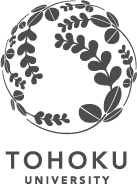TUPD-2022-018
| TITLE |
Willingness to Pay for Pesticide-free Vegetables: A Trade-off between
Appearance and Pesticide Use
|
| AUTHOR |
Katsuhito Nohara
Professor, College of Tourism, Rikkyo University
|
| P D F |

|
| PUBLISHED IN |

 Humanities and Social Sciences Communications volume 11, Article number: 12 (2024)
Humanities and Social Sciences Communications volume 11, Article number: 12 (2024)
|
| ABSTRACT |
Most Japanese consumers focus on the appearance of vegetables, for example, their shape, color, or size. However, giving consumers precise information about the growing process of vegetables may change their preferences. Therefore, in order to reduce food loss, it is important to change consumers' preferences for vegetables and for producers to understand consumers' preferences, and select vegetable production methods. Japanese supermarkets sell vegetables containing legally permissible amounts of pesticides and chemical fertilizers, and chemical-free vegetables are generally hard to find. Therefore, in this study, pesticide-free vegetables were cultivated from scratch to analyze whether consumers are willing to pay a premium when presented with pesticide-free vegetables. The contingent valuation method and double-bound dichotomous choice were used for analysis. The results revealed that consumers' willingness to pay was not related to the appearance of the pesticide-free vegetables. In other words, they cared neither about the color nor about the shape of the vegetables so long as they were pesticide-free. In Japan, some farmers continue to grow organic or pesticide-free vegetables, although they are few. Therefore, if producers know the actual needs of consumers' vegetables, they may reduce their dependence on pesticides and chemical fertilizers and expand the market for environmentally friendly and healthy vegetables. Such a change could, in turn, reduce food loss. |
| KEYWORDS |
contingent valuation method, pesticide-free, food loss, vegetables’ appearance, discarded
vegetables
|
| ISSUED | December 2022 |

